When Sipping Tea Was A Socially Ruinous Act
There’s a revolution brewing in that pot of Earl Grey.
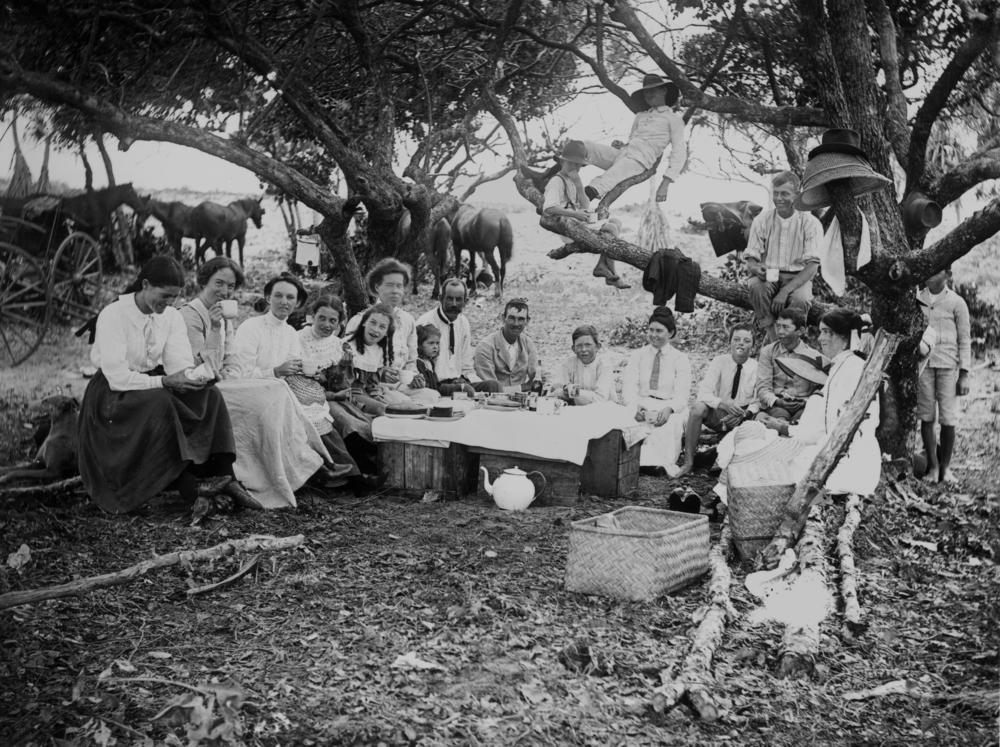
A family picnic with cups of tea in Queensland, c. 1900. (Photo: State Library of Queensland/Public Domain)
Could anything be as innocuous as a nice spot of tea? Today, the word “tea” conjures up images of sipping from dainty cups with grandma, children’s cup-and-saucer sets, boxes of “Tummy Time” and “Throat Coat,” and, of course, the Queen. But amazingly, there was a time when tea was seen as a threat to traditional Christian values—and the social hierarchy of the Western world.
Tea was virtually unknown outside Asia until the mid-16th century. As exploration opened up the channels between East and West, Chinese (and later Indian) tea became one of the many commodities traded among these new, wary global partners. From almost the beginning, Europeans regarded tea as tainted—tied to the thriving opium trade that was devastating the Chinese empire.
In 1662, a bewildered, pious royal bride named Catherine of Braganza travelled from Portugal to the United Kingdom. In her wedding trousseau, she had one unusual item-several trunks filled with premium Chinese tea. A hard-core “tea addict,” Catherine soon introduced the drink to her husband King Charles II and the English court at large, and a national love affair blossomed.
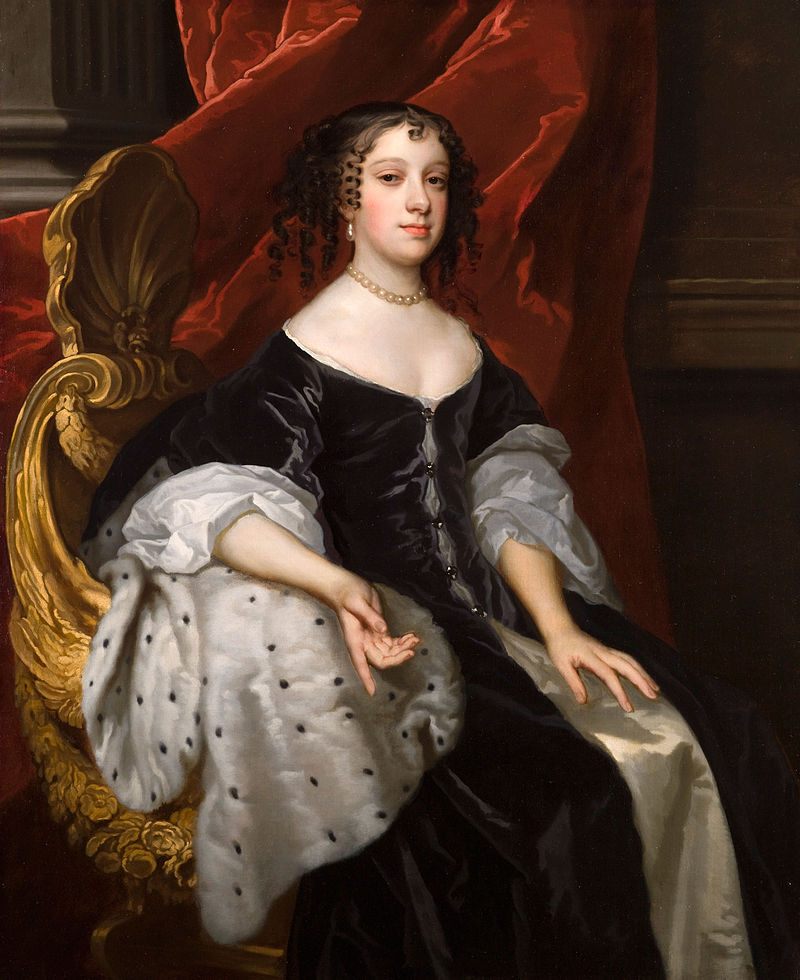
Catherine of Braganza, c. 1665. (Photo: Public Domain)
As with most new fads, tea almost immediately had its supporters and detractors. Many English writers and thinkers extolled tea’s supposed benefits—it gave you pep, it made you smarter, it cured every illness. But others felt differently. As early as 1682, a critic called tea “a great dryer, and a promoter of old age, and foreign to European complexions.”
Over the ensuing decades, as tea filtered from the upper classes to the rest of society, the furor over tea grew even louder. Some considered it as “dangerous as opium,” and many [men] believed it was particularly bad for women, inducing in the “‘tender sex,’ a diminution of their prolifick energy, a proneness to miscarry, and an insufficiency to nourish the child.” In 1737, Gentleman’s Magazine railed against the drink:
Were it entirely wholesome as balm or mint, it were yet mischief enough to have our whole populace used to sip warm water in a mincing effeminate manner once or twice a day…in this manner the bold and brave become dastardly, the strong become weak, the women become barren; or if they breed, their blood is made so poor that they have not the strength to suckle, and if they do, the child dies of the gripes.
A hearty dose of xenophobia is evident in many of the anti-tea tracts of the time. In a 1757 essay, Jonas Hanaway wrote:
To what heights of folly must a nation be arrived, when common people are not satisfied with wholesome food at home, but must go to the remotest regions to please a vicious palate! Were they the sons of tea-sippers, who won the fields of Crecy and Agincourt, or dyed the Danube’s streams with Gallic blood?
“Tea was considered a bad habit on account—in part—of its foreign origins and a perception that it was less nutritious than milk, or, in fact, for some, domestically-produced beer,” says Dr. Helen O’Connell, senior lecturer in English at Durham University. “There was also a clear sense that it was addictive—that once the habit took hold, it was very hard to give it up and that it could indeed lead to alcoholism.”
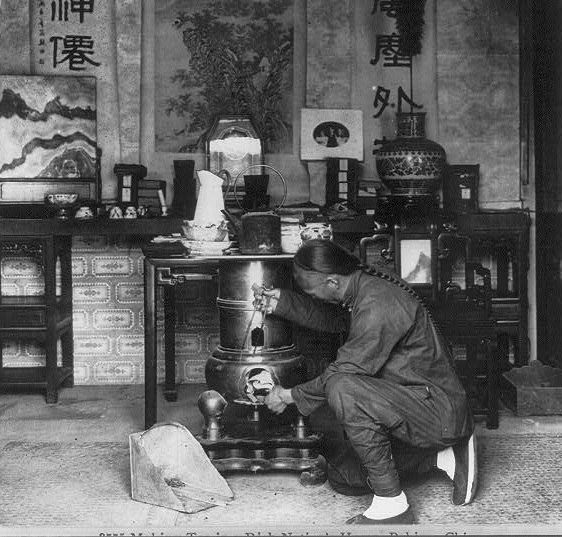
Making tea in Beijing, c. 1901. (Photo: Library of Congress/LC-USZ62-54318)
This fear of addiction was two-fold. Not only did tea contain caffeine, a known addictive substance, it was also often taken with another New World menace: sugar. Foreshadowing worries of our present century, sugar was considered a dangerous habit which made people fat, blackened their teeth and changed their personalities. Critics felt that it made the West too dependent on foreign trade.
As the 18th century unfolded, revolutions swept America and Europe, as “common” people took control of their destinies. Lower-class people began to demand a better quality of life, and they increasingly drank tea. Many uprisings originated in tea or coffee houses, and the “open society” of these establishments worried those in charge.
These fears went on in climate of revolution. In Ireland in particular there was a constant fear about the poor daring to drink a beverage meant for their betters. “For poorer women, one of the principal worries is that they cannot afford tea—as it was expensive—and that if they become addicted to it, they will then destroy themselves and their families, who will no longer be able to afford proper nourishing food,” Dr. O’Connell explains. In England, Jonas Hanaway moaned, “it is the curse of the nation, that the labourer and mechanic will ape the lord.”
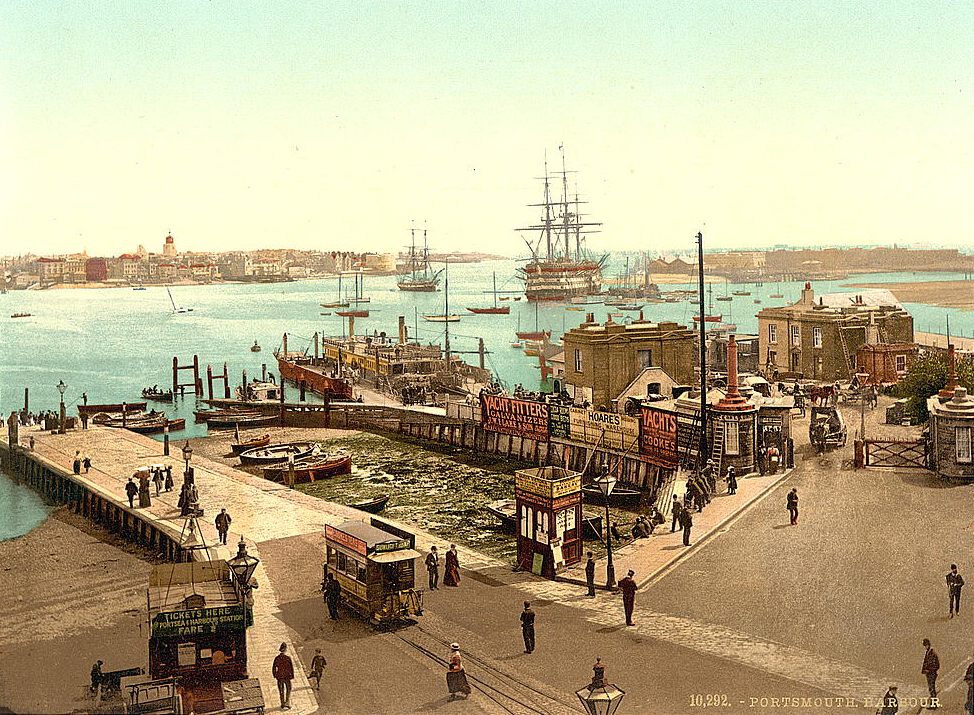
Trading ships in Portsmouth harbor, England. (Photo: Library of Congress/LC-DIG-ppmsc-08800)
Tea drinking also gave women the chance to congregate as they never had before. While men had always had plenty of reasons to meet socially, now women could enjoy a relaxing, socially accepted brew together. “It was feared that this sociable activity would displace other more virtuous activities, induce laziness and a general domestic irresponsibility,” Dr. O’Connell explains. “Domestic irresponsibility is of particular concern as instability in the home can—it was felt—lead on to local and eventually national instability.”
In 19th-century Ireland, many well-meaning upper class reformers targeted poor women’s tea consumption. In her paper “A Raking Pot of Tea: Consumption and Excess in Early Nineteenth-Century Ireland,” Dr. O’Connell explores the pamphlets and short stories produced by Irish reformers, who worried “that tea-drinking women suggested or symbolized a female (proto-feminist) and lower-class agency that was deemed problematic in a time of general revolutionary anxiety of the late eighteenth and early nineteenth centuries.”
One pamphlet exclaimed, “the times will never be good till poor men leave off whiskey, and poor women tea.” Quaker reformer Mary Leadbeater even wrote a short piece of fiction called Cottage Dialogues, which featured two irresponsible tea drinking women talking about their “hankering after it.”

Mary Cassatt’s Five O’Clock Tea. (Photo: Public Domain)
Those who feared tea consumption threatened traditional ways would see some of their prophecies come true. By the late 19th century, employers in the United Kingdom were expected to give all employees, no matter their station, a daily break for tea. In the book Votes for Women, historian Roger Fulford writes of the growing suffragist movement in 19th-century Manchester, England:
The spread of independence was helped by the growth of the tea shop. A few expensive restaurants existed but apart from these, there were no places for a quick meal other than the large damask tablecloth and best silver at home, or the brisk clatter of the bar parlor. The tea-shop gave the young—perhaps in revolt against the stuffiness of family afternoon tea—an ideal meeting place, it was an integral part of the woman’s liberation movement.
In late 19th-century America, the now established rites of female “tea time” and “tea parties” would also play an important part in the early women’s liberation movement. In July 1848, Lucretia Mott, Martha Wright, Mary Ann McClintock and Elizabeth Cady Stanton met for tea at the home of Jane Hunt in Waterloo, New York. “I poured out, that day, the torrent of my long-accumulating discontent,” Cady Stanton remembered, “with such vehemence and indignation that I stirred myself, as well as the rest of the party, to do and dare anything.”
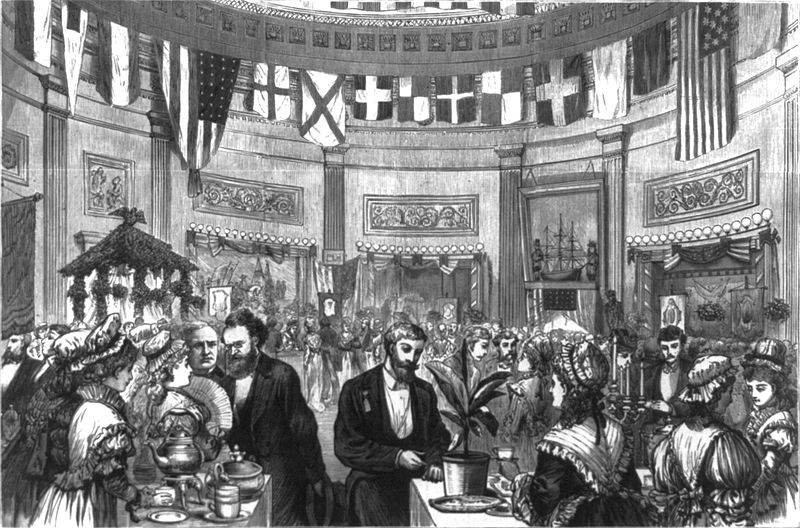
A Centennial tea party in Washington DC, 1875. (Photo: Public Domain)
This tea would lead to the famed Seneca Falls convention later that month. During the early 20th century, noted suffragette Alva Vanderbilt Belmont would hold massive fundraising teas to support the cause of women’s lib.
Not surprisingly, these events did little to quell critics’ fears. “The communal—or sociable—aspect of tea-drinking [was] always deemed problematic—even for the upper classes,” O’Connell says. “Groups of tea-drinking women [were] associated with gossip, laziness, perhaps even politicization, and general excess.”
By the late 19th century, the rituals of frivolous tea time were seen by some to practically control high society women’s lives. Nowhere is this more evident than in Edith Wharton’s 1905 tragic novel, The House of Mirth, in which tea is used as a powerful metaphor from beginning to end.
“Because it was omnipresent, ritualistic and greatly stratified by quality, I think tea made an ideal embodiment of the forces that constrained women like Wharton,” screenwriter Cat Vasko explains. Not only does the novel’s socialite heroine Lily Bart’s life come to ruin because she chose to take poor quality tea with an improper man—her true, relatively lowly love Lawrence Selden—her addiction to a luxurious life and stronger and stronger tea eventually leads to the laudanum addiction which causes her death. Towards the end of the novel, a broke and broken Lily rails against her constant attempts to keep up with her aristocratic superiors:
It doesn’t sound very amusing does it? And it isn’t—I’m sick to death of it! And yet the thought of giving it all up nearly kills me—it’s what keeps me awake at night, and makes me so crazy for your strong tea.
“What Wharton is really vilifying is what tea represents,” says Vasko, “a stultifying and oppressive series of rituals that are as addictive as they are confining. The stronger the tea, the greater the magnetism of brainless, suffocating luxury.” The last time she meets Selden, Lily declines his offer of tea, stating, “No: I drink too much tea.” Soon after, she kills herself with a laudanum overdose, having nobly paid off all her debts.
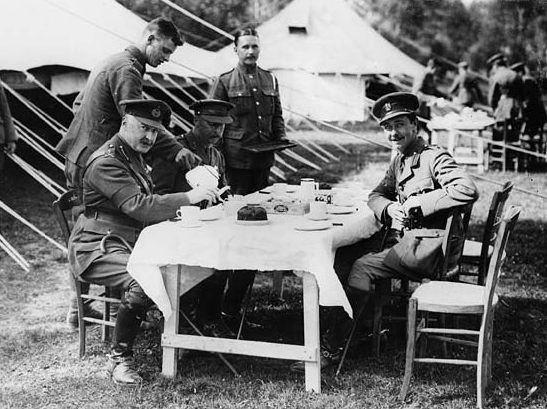
British officers taking a tea break in World War One. (Photo: National Library of Scotland/Public Domain)
With the end of Lily’s Edwardian age and the dawn of World War I, the United Kingdom and America had much more important things to worry about than tea consumption. The stratified, patriarchal society, which tea critics were trying to preserve, was blown apart by two World Wars. The world changed, and tea’s popularity continued and grew. Today, tea is a multi-billion dollar industry. People enjoy it hot and cold, but few drinkers know of the brew’s subversive past.

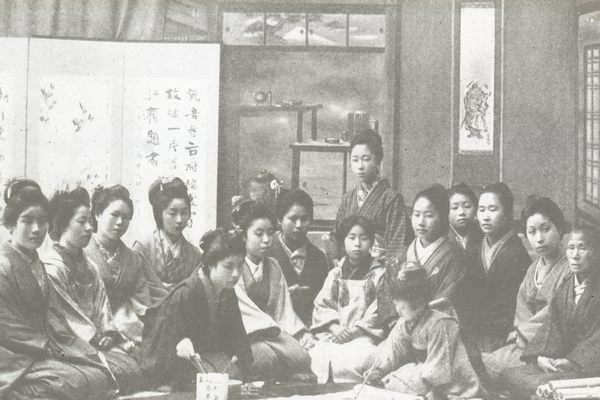

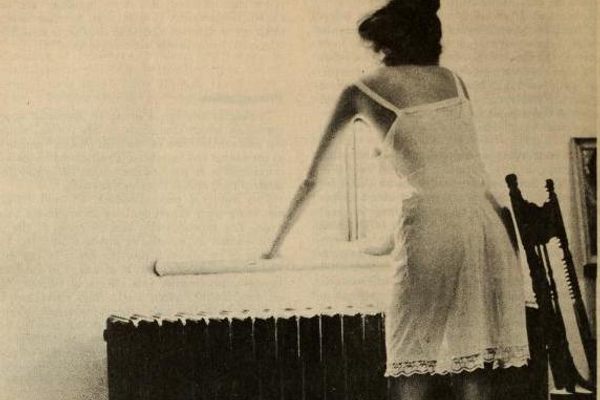



Follow us on Twitter to get the latest on the world's hidden wonders.
Like us on Facebook to get the latest on the world's hidden wonders.
Follow us on Twitter Like us on Facebook